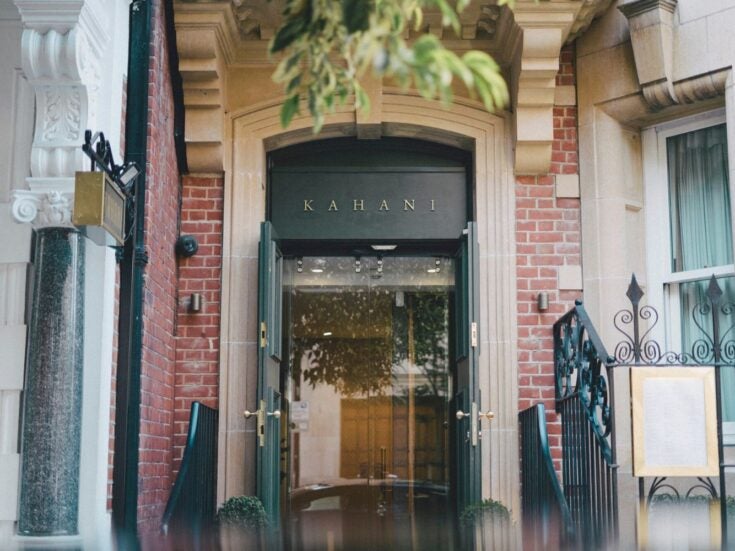
After years of tremendous growth and a post-pandemic boom that saw no shortage of UHNWs spend on luxury and travel experiences, many influential commentators have noted the less rosy picture for the luxury goods sector in 2024. In December, Bruno Pavlovsky, Chanel’s president of fashion, said brand was seeing a ‘down economy everywhere, in every single country’.
Shares in LVMH – the owner of Dior, Fendi and Bulgari – have fallen considerably since last summer, just as slow sales at Gucci and Yves Saint Laurent saw Kering’s revenues dip by nearly 10 per cent in the third quarter of 2023. RBC Capital Markets forewarned in October that the global luxury industry would face a downturn this year.
[See also: Review: The Price Is Wrong is another work of whistling ambition from Brett Christophers]
Yet China, which has struggled to stage a strong economic recovery in 2023, and remains volatile to this day, may carry the luxury goods sector in 2024 – and cement its status as a key luxury market for investors.
At GAM Investments, we expect demand for luxury goods in the world’s second largest economy to increase by 5 per cent this year. What’s more, we think the Chinese will increase luxury spending by almost €80 billion between 2025 and 2029.
Brands embrace China’s domestic luxury market
There are several reasons for our sanguine assessment. For one thing, demand from China’s wealthiest consumers has been the single biggest growth driver for demand in luxury since the early 2000s. Demographic change, the growth of the middle classes and the importance of social status are all continuing to deliver an insatiable appetite for luxury.
The bulk of the Chinese spend used to be outside China, but post-pandemic, the overwhelming majority of spend is now done locally. Despite the grand reopening of the economy at the start of 2023, the overwhelming majority of spending is now done locally, as international travel takes time to recover.
[From the magazine: A rising tide: how Vanguard is making its presence felt in the UK]
Many luxury brands have embraced this domestic focus, and China now has a more extensive luxury retail presence than ever before, predominantly in malls, with better product assortments in recent years. The local authorities are keen that a far greater share of this consumer spend remains ‘at home’, and some brands, including the likes of Chanel, Dior, LVMH, Cartier and Hermes, have dutifully obliged by facilitating this.
In Shanghai, luxury demand is now very similar to levels seen in New York and London, despite some differences in consumer spending. One key distinction is that Chinese consumers have traditionally focused disproportionally on leather goods and less so on apparel. But this is slowly changing. And, in other ‘tier 1’ cities, including Beijing and Guangzhou, where some of China’s most affluent consumers can be found, luxury demand is also thriving.
APAC buyers outpace ‘less relevant’ Europeans
Consumers of luxury goods in Asia as a whole have been increasing in prominence over the years – a region which we now believe accounts for more than 50 per cent of global luxury spending.
In the US, buyers have historically under-indexed in luxury consumption, relative to the market’s wealth, but there has been more interest in the sector after 2020.
[From the magazine: The most important super-prime property company you’ve never heard of]
This has been driven not only by a return to travel and the quest for experiences by US-based luxury lovers, but also by some esteemed brands significantly broadening their reach. Luxury purveyors such as LVMH have been successful in enticing young, wealthy consumers through involvement in the likes of sports, music and entertainment, alongside an adept understanding of social media.
By contrast, European buyers are becoming less relevant in the luxury market, with an increasing number of US and Middle Eastern consumers travelling to the region to purchase goods. Demand from local wealthy consumers clearly remains healthy, but we see temporary weakness at the aspirational end at this time.
The importance of ‘brand heat’
While there may be challenges for the global luxury market in 2024, high-end luxury companies often provide robust returns and act as a hedge against inflation, as the ultra-wealthy are generally less affected by changes in price caused by downturns.
But for investors in luxury, it is critical to recognise the importance of brands rather than product categories. Not all leather goods or watches, for instance, are desirable or command limited demand elasticity to price. Only a few leading luxury brands – which are best at anticipating their consumers’ spending habits and needs – are able to engage the wealthy with their apparel offering. A brand’s profile, and what’s known as ‘brand heat’, are key.
[From the magazine: The new face of Saudi Arabia]
If we were to anticipate any change in these trends in 2024, we may see a greater focus on the quality and timelessness of products versus shorter term ‘fashion’ names – but this would only serve to sharpen consumer interest at the very top end of the market, which has been the clear direction of travel for some time.
On the whole, luxury names that have a proven track record of resilience and demonstrate significant momentum tend to outperform peers. Some examples would include the likes of Ferrari, Hermes, Cucinelli, and Cartier, as well as Kweichow Moutai in China.
And, as Marc Metrick, CEO of luxury department store Saks, noted in November, the luxury consumer ‘is last in, first out of volatile moments which we are in right now’.
In other words, the luxury consumer is the last to restrain spending and the first to return. Nowhere is this more true than in markets like China, where the appetite of luxury consumers remains insatiable – which may be the key to giving luxury investors the reassurance they need in 2024.
Flavio Cereda is the Co-Investment Manager of GAM Luxury Brands Strategy






